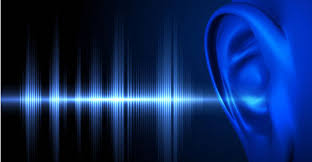The human ear contains the smallest bones in the body, yet they work in one of the most powerful and significant ways. While our eyes and ears both act as devices to communicate and process information to the brain, the ear does not need the input to be translated. When sound waves travel into the ear and stimulate the auditory nerve, electrical signals are sent directly to the brain to process the information.
“A sound may arrive from an unseen source. In such cases, we must use our memories of sound(s) previously heard, or our imaginations, to discern the source and meaning of the sound(s). For this reason, Bruce R. Smith suggests that knowing the world through sound is fundamentally different from knowing the world through vision (Smith 2003).”(Barber 2018)

The sense of sound is the human’s original and dominant sense. Back before we had text, print, or digital technology, stories were told using spoken word. “Speech, used in storytelling, provided a way to express abstract thought, to share ideas, history, memories, and culture.” (Barber 2018). Historians say that oral storytelling has been in existence as long has human language. It is likely that our ancestors gathered around fires telling tales, sharing their experiences, and bestowing wisdom to the younger ones in attendance. Storytelling was used as a means of education, contemplation, connection and entertainment.
As humans, we all form different perceptions based on our sensory experiences, so when we listen to a story in spoken word, we may make varying mental pictures or understand the meaning of the story in different ways. “Sound provides a way of knowing and being in a world, whether real or imagined. Sound, at the heart of literary experiences, prompts engagement that is participatory, interactive, experiential.”(Barber 2018).
I will give examples of how the same story can be experienced in three different ways and how the mode they are presented can change the way we see and understand the story. When a story is told in spoken word, those experiencing the story have to rely on their listening and memory skills to experience and comprehend the story. One of the affordances of hearing a story spoken out loud is that the user is able to form their own visual imagery of the story. This lends for a unique and personal reception of the story. Telling a story in the acoustic space also offers the opportunity to use vocal inflection, tone, and emotion to convey various elements of the story. Below I will give an example of a story being told utilizing only the acoustic space. As you listen to this audio clip, consider how the reader’s vocal tones and inflection spark emotion. How does this affect the way you understand the story?
External Audio Link